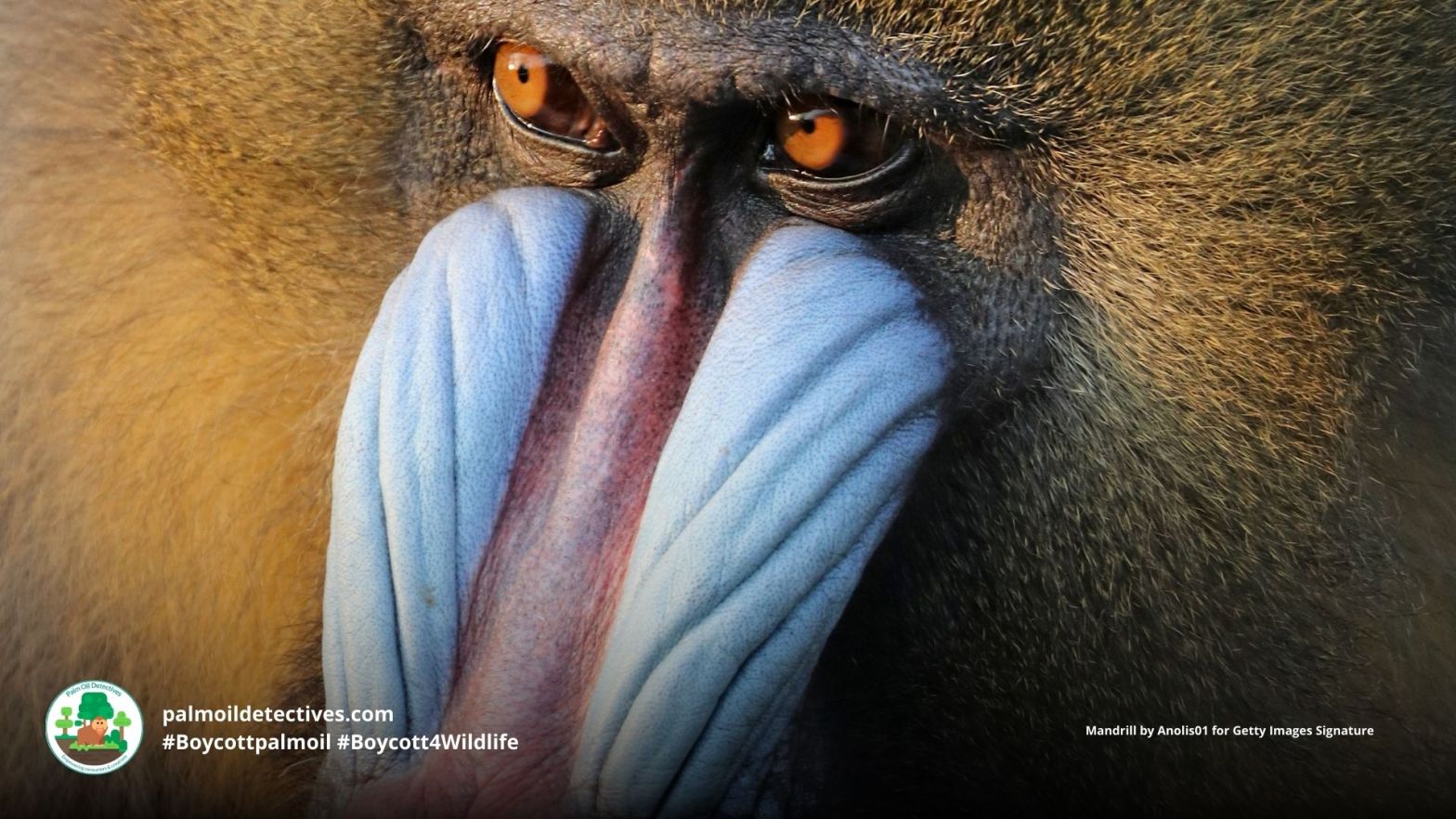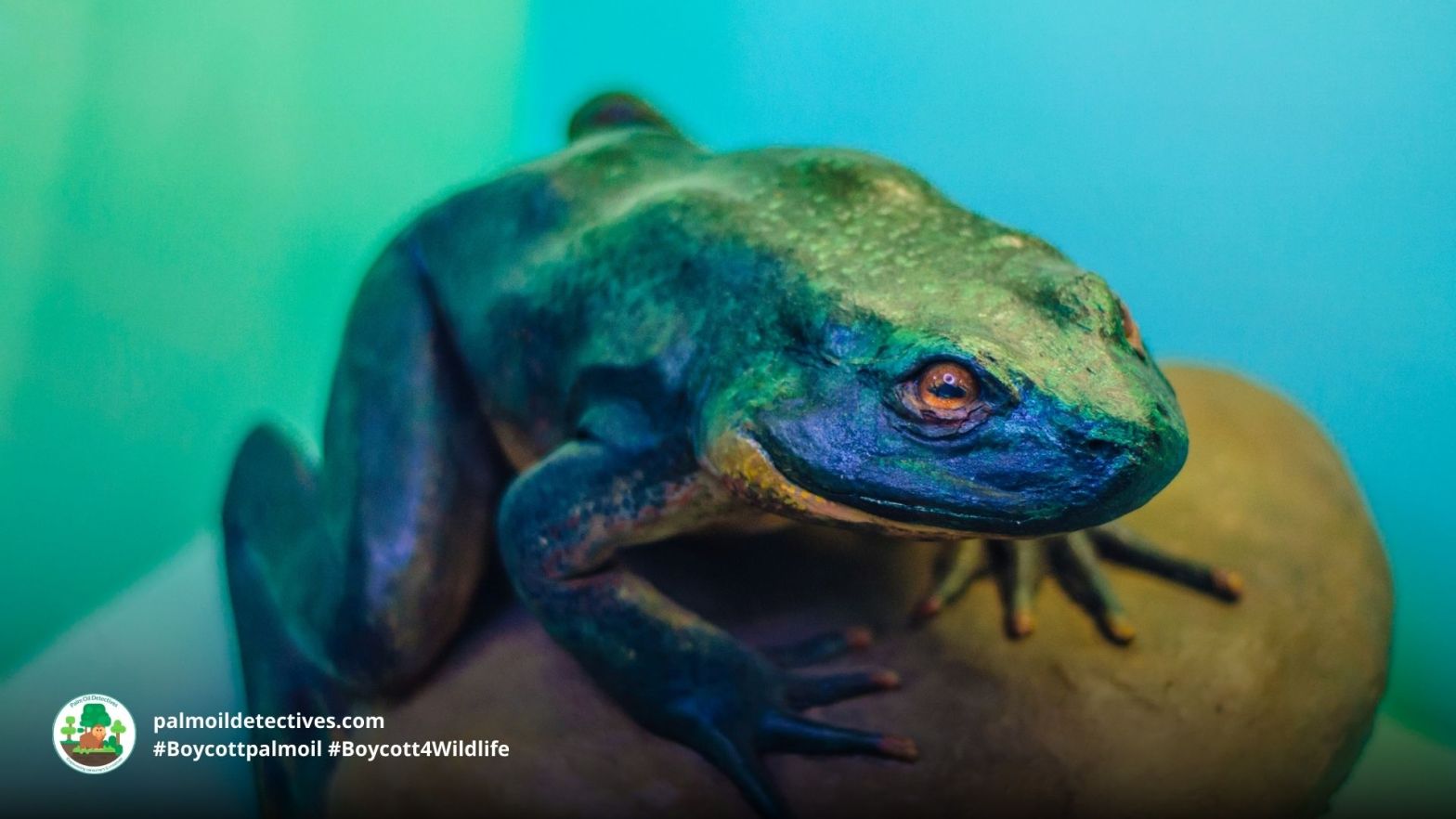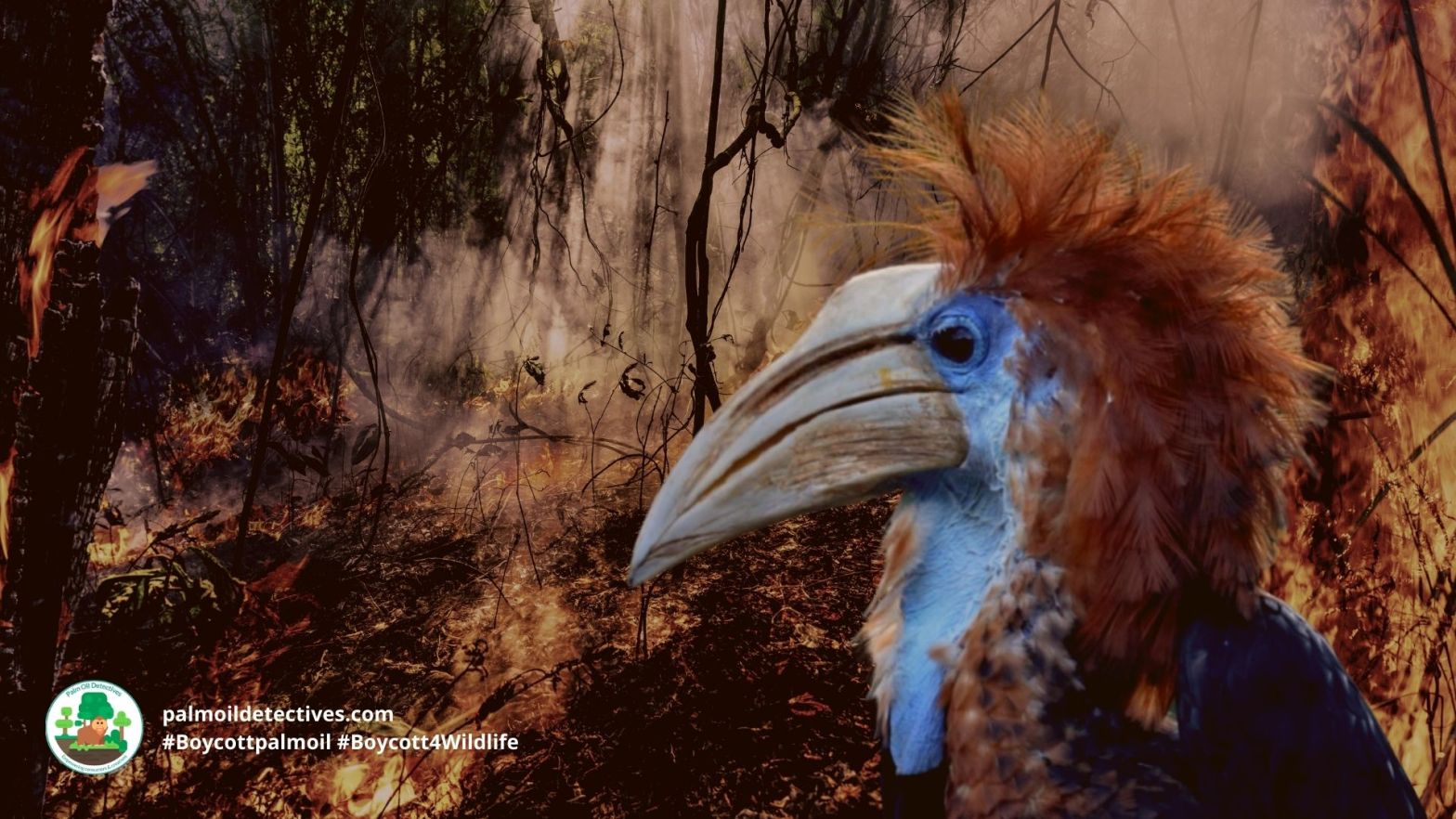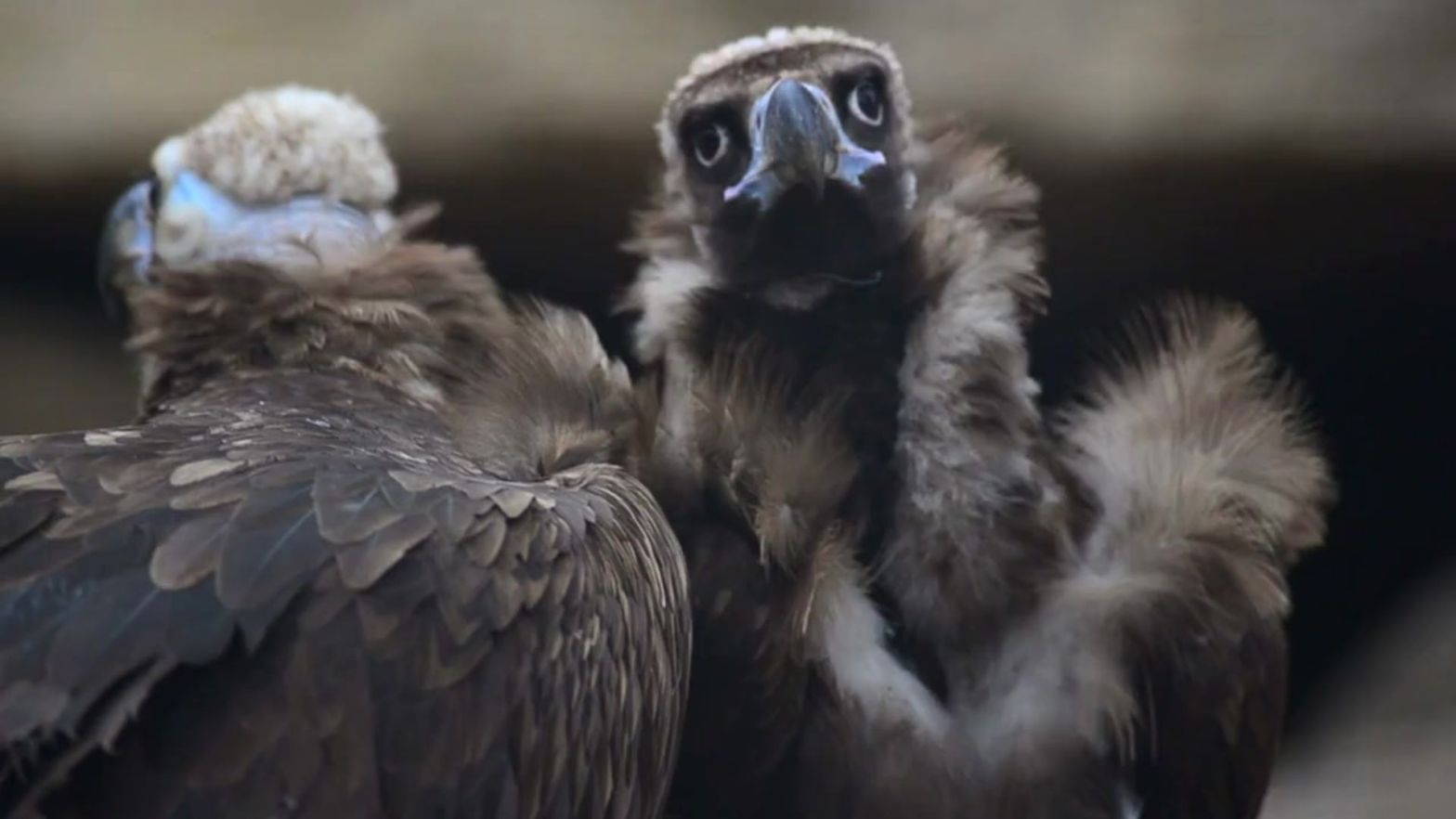Magnificent #mandrills are undoubtedly one of the world’s most photogenic monkeys – famous for their brightly coloured and expressive appearance. Their bright blue rumps and vivid red, yellow and pink faces become even more deeply colourful when they’re excited. Males use their extra long canines for self-defence, but exposing their teeth can also be a sign of friendliness. Mandrills are important seed dispersers and a critical part of keeping the ecosystem in balance. These beautiful monkeys are vulnerable from palm oil, meat and cocoa deforestation and intensive poaching. Help their survival and #Boycottpalmoil #Boycott4Wildlife
Tag Archives: Cameroon
Goliath Frog Conraua goliath
Goliath Frogs are the largest frog in the world and can grow as large as a domestic cat. These muscle-bound #amphibians lift heavy rocks to build nests and protect their young. They face extinction from #palmoil #deforestation.
Their nesting and reproduction is hugely dependent upon access to clean, fast-flowing rivers – for this reason the encroachment of industrial scale palm oil, cocoa and timber deforestation and p0llution of rivers is a direct threat to the existence of the goliath frog. Help them every time you shop in the supermarket and #Boycottpalmoil #Boycott4Wildlife
Yellow-casqued Hornbill Ceratogymna elata
The yellow-casqued hornbill is one of the largest birds in the rainforests of West Africa weighing up to two kilos. They prefer to live high up in the rainforest canopy in Côte d’Ivoire, Ghana, Liberia, Mali and Sierra Leone. Their main threat is hunting and human persecution and they are possibly extinction now in some countries. Recent mass deforestation for mining, palm oil, cocoa and meat is also a threat and they are now vulnerable. Help them every time you shop and be #vegan, #Boycottpalmoil, #Boycott4Wildlife
Butterfly Viper Bitis nasicornis
Although they possess one of the most potent venoms of all snakes in Africa, Butterfly Vipers are surprisingly placid and won’t attack unless provoked or threatened. They are known by several common names: Rhinoceros viper, River Jack, the Rhinoceros horned viper and the Horned puff adder. They are appreciated for their vividly coloured markings that keep them camouflaged on the forest floor.
Hippopotamus Hippopotamus amphibius
Hippopotamus Hippopotamus amphibius Extant (resident) Angola; Benin; Botswana; Burkina Faso; Burundi; Cameroon; Central African Republic; Chad; Congo; Congo, The Democratic Republic of the; Côte d’Ivoire; Equatorial Guinea; Eswatini; Ethiopia; Gabon; Gambia; Ghana; Guinea; Guinea-Bissau; Kenya; Malawi; Mali; Mozambique; Namibia; Niger; Nigeria; Rwanda; Senegal; Sierra Leone; Somalia; South Africa; South Sudan; Sudan; Tanzania, United Republic of;Continue reading “Hippopotamus Hippopotamus amphibius”
African Forest Elephant Loxodonta cyclotis
African Forest Elephant Loxodonta cyclotis Critically Endangered Extant (resident): Angola; Benin; Burkina Faso; Cameroon; Central African Republic; Congo; Congo, Côte d’Ivoire; Equatorial Guinea; Gabon; Ghana; Guinea; Guinea-Bissau; Liberia; Niger; Nigeria; Senegal; Sierra Leone; South Sudan; Togo Extinct: Gambia Rapid land use change, including palm oil plantations across their range is driving the direct loss andContinue reading “African Forest Elephant Loxodonta cyclotis”
Western Lowland Gorilla Gorilla gorilla
Mighty, intelligent and gentle Western Lowland Gorillas are well-loved apes, they are #critically endangered by #deforestation and habitat loss for #palmoil, cocoa and mining along with disease and illegal poaching in #Congo #Nigeria #Cameroon Help them to survive every time you shop! Join the #Boycott4Wildlife
Drill Mandrillus leucophaeus
According to National Geographic, Drills are shy creatures that live in one small and remote area of Africa. Their faces aren’t as colourful as another species in their genus the Mandrill. Yet Drills still possess a dramatic appearance with pitch-black faces surrounded with a white fringe. Males have fatty cheek pads and a splash of red under their lower lips gives them the appearance of having broken into a makeup cabinet.
Four-horned Chameleon Trioceros quadricornis
The main threat to this species is deforestation. Agricultural development extends as high as 1,700 m asl. near Nsoung village on Mt Manengouba (Gonwouo et al. 2006), and forest on the mountain’s southeast slope is rapidly disappearing (Gonwouo et al. 2006).
Rüppell’s Vulture Gyps rueppelli
The Rüppell’s Vulture is an enigmatic avian marvel soaring the African and European skies. They now teeter on the brink of extinction due to the depletion of their prey species and deforestation throughout their range. This critically endangered species, are known for their awe-inspiring high altitude flights—reaching heights seen by commercial airlines. They face a grave threat from the insidious palm oil industry, mining along with other destructive industries across their range. Help them to survive and #BoycottPalmOil and #Boycott4Wildlife every time you shop.
White-bellied Pangolin Phataginus tricuspis
The White-bellied Pangolin also commonly known as the Tree Pangolin is a fascinating creature that is like a giant pest controller, estimated to consume around 70 million insects per year. Pangolins don’t have teeth, rather they have scales lining their stomachs which aid them in the digestion of food that is swallowed whole. Baby pangolins often ride on their mother’s backs and and are known as pango pups. They are able to use their tails to support their body weight and can walk upright on their hind legs.
They are often captured and killed for the illegal poaching trade in abandoned palm oil plantations in their native homelands in Africa. Help them every time you shop and #Boycottpalmoil #Boycott4Wildlife











